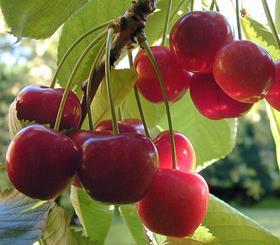
Having smashed export records over the 2015/16 season, Australia’s cherry industry is continuing its campaign for more amicable trade conditions in a number of Asian nations.
Shipments to international markets surpassed the 5,450 tonne mark as of 31 January (2016), up 63 per cent on the 3,700 tonnes exported over 2014/15, according to data from the World Trade Atlas and Fresh Intelligence Consulting.
Combined shipments to Hong Kong and China accounted for almost 55 per cent of the exported volume at 2,983 tonnes.
Trade to Taiwan (514 tonnes) more than doubled from the previous season, while shipments to South Korea lifted 6 per cent to 344 tonnes on the back of a large increase last year.
Despite the encouraging signs, the industry is still yet to reach its full export potential, according to Simon Boughey, chief executive of Cherry Growers Australia.
Tasmania remains the only Australian state with direct airfreight access into a number of key Asian markets, including China and Taiwan, after negotiating protocols based on its fruit fly free status. Growers and exporters from other production hubs are exploring alternate routes into Asia’s protocol markets, with 100 tonnes of cherries seafreighted from mainland Australia into China this season.
However, it is the industry’s ability to pick, pack and airfreight its fruit to Asia within a 48-hour window that gives it a competitive edge on its rival Southern Hemisphere producers. If airfreight access was granted to the entire industry Boughey believes an additional 1,500 tonnes could be exported each season.
“This shows the need for the Australian cherry industry to continue the work in obtaining market improvement into key markets forthe whole industry across the three to four month season within the key protocol markets of Thailand, Taiwan, China and South Korea,” Boughey explained.
Trade blockades in place with Russia and Vietnam also reduced export volumes over 2015/16, with Boughey suggesting these two markets were each capable of taking 200 tonnes per season.
Boughey said shipments to non-protocol markets would continue to form an important part of export programmes moving forward, with markets such as Singapore (510 tonnes), the UAE (274 tonnes) and Malaysia (209 tonnes) all taking meaningful volumes in 2015/16.
The Australian industry also re-entered the North American market this season, with over 100 tonnes shipped into the US and Canada.
Cherry Growers Australia expects to release its final season report next month.



